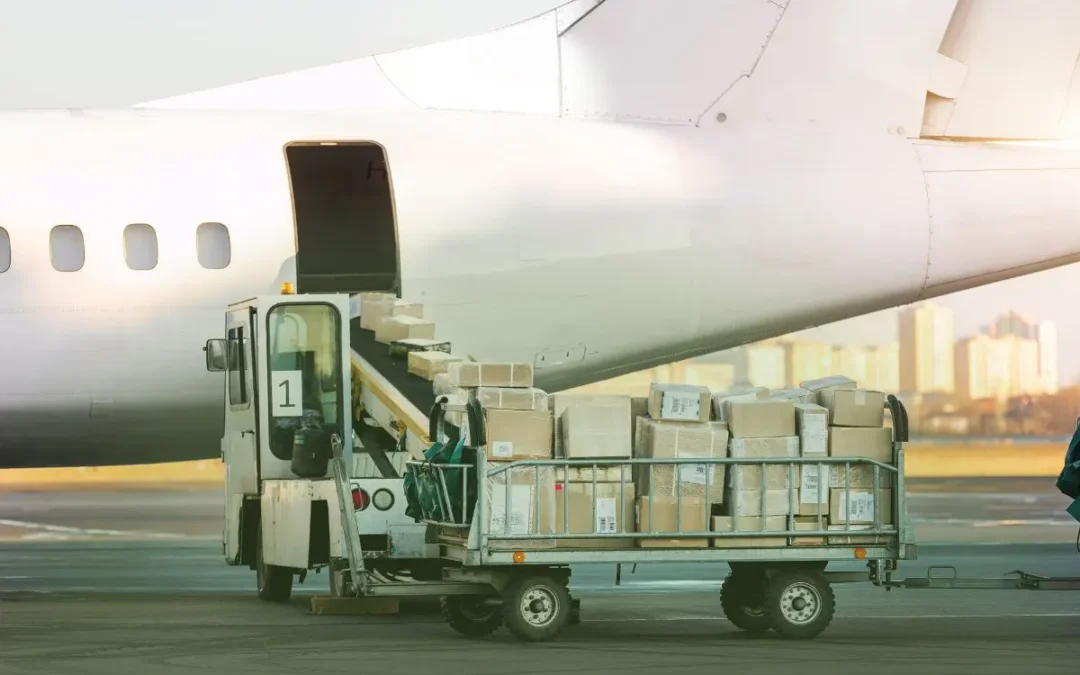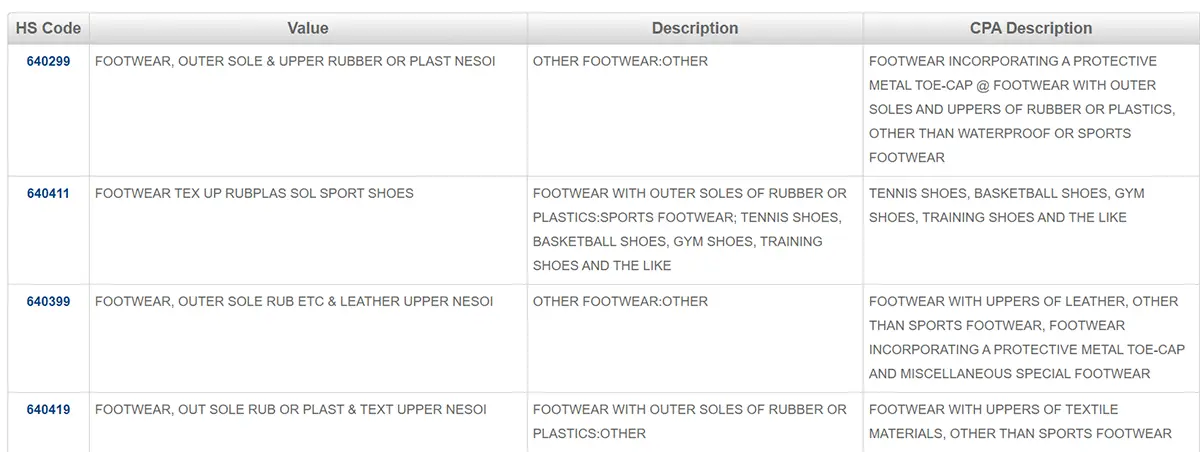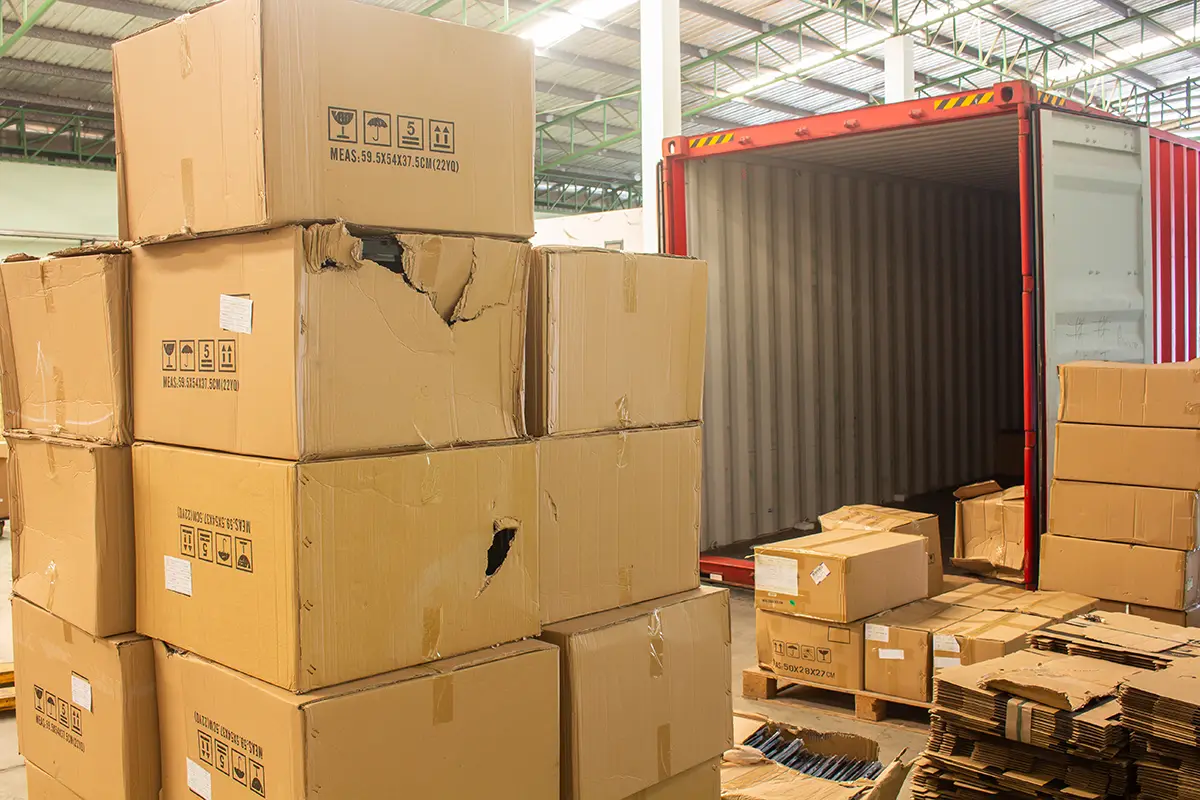Table of Contents
- What is the best way to do international shipping for Shopify orders?
- What are international shipping costs?
- How much is international shipping?
- What is the cheapest international shipping?
- How to start shipping internationally for Shopify orders?
- Key Takeaways
Are you ready to take your Shopify store to the next level and reach customers across the globe? Expanding your business’s reach is an exciting opportunity. As a business leader already selling domestically, you’re probably familiar with the ins and outs of local shipping. Now, stepping into international markets, you need to understand what factors drive shipping expenses—and, more importantly, how to keep those costs under control.
How can you find the best international shipping prices for Shopify orders? You want to grow your business and reach customers around the world, but international shipping expenses can hold you back. Global shipping, if not managed properly, can eat up your profit margins.
In this guide, we’ll walk through factors that drive international shipping costs and show you practical ways to organize your international shipping processes. This way, you can keep more of your hard-earned profits as your Shopify business expands globally. Let’s get started.
What is the best international shipping for Shopify orders?

There are three primary options to ship Shopify orders internationally:
- Shopify Shipping
- Shopify Fulfillment Network
- Third-party shipping software
The best option largely depends on your business, but many companies benefit from third-party shipping software options. They often have a deep integration setup with many carriers, sales channels, and other programs. This gives you a lot of flexibility beyond just your Shopify orders.
The Shopify options are fantastic at what they do, and there’s a lot of synergy between the ecommerce platform and its shipping software tools. On the other hand, Shopify must also balance its focus with the shopping cart experience, ecommerce platform, marketing, and other features besides shipping operations.
In contrast, third-party shipping software providers home in and focus heavily on optimizing logistics and shipping operations to maximize efficiency and cost savings. Because international shipping is logistically complex, Shopify sellers would be wise to consider third-party shipping software with a hyper-focus on the global shipping experience.
What are international shipping costs?

Simply put, international shipping costs are the extra costs incurred when you ship goods to another country. The most common international shipping costs are duties and taxes, often lumped together as an additional expense on top of the base shipping rate.
Duties are charges that a destination country may impose on specific commodities to inflate that cost so that their domestic businesses can compete with outsiders. These are generally more flexible and subject to change than a tax. Taxes are imposed to support the government infrastructures of the destination countries.
What is the base rate for international shipping?
The base rate is part of what you, the seller, will pay to print a label with shipping software, along with fuel surcharges and other fees. A base rate in shipping is the cost to drive or fly a package somewhere. The base rate price is primarily based on the transit distance between the origin and destination and the package weight. However, other factors, such as dimensions, can impact the base rate. The logic for calculating the base rate for international shipping is typically the same as domestic shipping, but the cost is generally higher because of the longer transits and additional handling.
Who pays the extra costs for international shipping?
Payment responsibility for extra international shipping costs like duties and taxes depends on incoterms. Incoterms are the rules that establish the responsibilities of the sellers and buyers concerning duties and taxes. Typical examples are Delivered at Place (DAP) and Delivered Duty Paid (DDP). Depending on the incoterms of the sale, you may receive a supplemental invoice from the carrier to cover the cost of taxes and duties. Otherwise, the bill will go to the recipient.
What is the difference between DAP and DDP incoterms?
The main difference between DAP and DDP is who is responsible for paying the duties and taxes associated with the shipment. With DDP, the seller agrees to pay for the duties and taxes. For DAP, the buyer is responsible for paying for the duties and taxes.
DDP is the most buyer-friendly term, as their only responsibility is to receive the goods at delivery rather than worrying about making another payment. If you choose to offer DDP in your shipping terms, consider adjusting your product pricing or shipping and handling price to offset the average cost of duties and taxes for your destination country.
How much is international shipping?

The short answer is, it depends. International shipping costs are calculated based on these factors:
- The carrier’s rates you use (i.e., UPS commercial rates, FedEx discounted rates through a third-party shipping solution, or your own negotiated USPS rates)
- The zone you are shipping to
- Package weight and sometimes dimensions
- Destination country’s duties and taxes
The good news is that you can quickly see estimated shipping costs for multiple carriers and find the best option. Third-party shipping software lets you input shipment information and view discounted international shipping rates for multiple carriers’ services. This gives you a realistic picture of a shipment’s cost and which international shipping service is the cheapest.
There are also online calculators to estimate duties and taxes for different countries, so there are fewer surprises when the shipping bill arrives.
What is the cheapest way to ship internationally?

Searching for the cheapest international shipping service can take time and effort if you try to compare rates manually. You may have heard that government-sponsored carriers like Royal Mail and the US Postal Service offer the cheapest international shipping rates. While this can sometimes be true, it’s essential to look at the big picture of overall shipping costs and risk.
Paying less for shipping can come with trade-offs. A longer delivery time or less tracking information. Let’s think about it practically: imagine you’re shipping your most expensive product from the US to a customer in Europe. Would you opt for the cheaper shipping rate that may take longer, or invest a little more for quicker delivery and better tracking? Your choice can impact your customer base’s satisfaction and repeat business.
So, what are the differences between government-sponsored and private carriers? While both Royal Mail and USPS have tracking options, their systems may offer fewer tracking details than private carriers typically do. Regarding package protection, carrier liability coverage options are basic and may not cover lost packages, high-value items, or parcel theft. If your customers expect quick delivery, it’s helpful to know that government-sponsored carriers may have longer transit times for international shipments than private carriers, like FedEx or UPS.
However, finding the best balance between cost and service doesn’t have to be a drain on time and resources. There are ways you can control international shipping costs for Shopify orders without having to compromise on the quality of the shipping service.
Utilize multiple carriers
One of the easiest ways to save the most money on international shipping is by comparing rates from multiple carriers, including regional options. If your online store has a lot of different product types and customer expectations, then this approach can really pay off. It’s best to compare the various carrier services and pricing structures. This way, you can find the best rates that meet the quality of shipping service your customers expect.
Another opportunity to save money on international shipping is with regional carriers. It’s worth checking because sometimes they offer competitive rates on services specific to a particular market. With international shipping, the more options you explore, the better chance of discovering an affordable shipping service for your products that keeps your customers happy.
Accurate descriptions and HS codes
Leverage dimensional rating
Dimensional weight, sometimes called dim weight, is a pricing strategy used by private carriers like FedEx, UPS, and USPS—dimensional weight factors in the size and weight of a package into the price of delivery. Even if an international shipment is light, if it takes up too much space, then you could overspend. Avoid extra charges on international shipping by ensuring your packaging has no unnecessary empty space. Avoid paying extra for oversized packages and keep your international shipping costs reasonable.
Optimizing your business’s packing procedures is not just about saving money. It’s about finding the sweet spot between keeping your items safe and reducing unnecessary space inside the shipping box. Smaller, tighter packages lower the risk of hitting the dim weight threshold and avoid extra international shipping fees. This approach also reduces waste and lowers fuel emissions, making your business’s shipping practices as environmentally friendly as possible. You also minimize any damage by reducing the chance of your package getting tossed around inside the box in transit. It’s a win-win!
Applying shipping insurance
When a business starts shipping internationally, packages go through handling touchpoints to pass through customs inspections. With each customs touchpoint, the risk of theft and damage rises. Especially on longer transits, when a parcel is more likely to get thrown around. So, adding extra protection with international shipping insurance for high-value items is really important.
When is it worth the extra cost? Paying a little more for shipping insurance helps you avoid significant expenses down the line. It’s the cheapest way to ship. Think about it: if a valuable item goes missing or gets damaged, the extra international shipping fees can pile up. Third-party insurance is a wise business decision that protects the bottom line and keeps shipments safe during transit. It covers losses that your shipping carrier won’t, so your business investment and customers are always protected.
Relying solely on a shipping carrier’s basic liability coverage is rarely enough if something goes wrong. Most private carriers will not claim liability for damage or theft. If this is the case, the carrier won’t cover any expenses. In situations like this, third-party shipping insurance is an invaluable choice for a small to midsize business that ships internationally. An added layer of security is priceless peace of mind for online retailers because their customers’ products are covered in case of damage or loss during their journey across the border.
Use multi-carrier shipping software
If you want the cheapest way to ship internationally, multi-carrier shipping software is the way to go. Not only do you get deeply discounted shipping rates, but you can also compare rates and services from multiple carriers to find the best overall service for your destination country.
Usually, larger businesses negotiate discounted shipping rates and flexible services via a strong relationship with shipping carriers. Regular communication and volume commitments generally result in discounts and perks. However, with shipping software, anyone can access discounted international shipping rates without negotiating. As a business, it makes international shipping straightforward.
A shipping solution also saves you money by preventing common international shipping problems that eat away at profit margins.
How to start shipping Shopify orders internationally

Shipping internationally isn’t as intimidating as it sounds. With a bit of guidance, it’s much easier to get started than people think. The first step is deciding where you want to sell. It’s wise to begin by targeting markets close to the country where your business is based. This way, you can test the waters with less risk before expanding your international shipping fulfillment operations to more distant regions.
Choose the Right Carrier
Whether you are a small business or an online retailer, well-established carriers are usually the first choice for many ecommerce businesses. When you’re new to international shipping, it’s wise to start with large carriers like USPS, DHL, UPS, and FedEx, which have strong global networks.
Once you have experience, you can refine your shipping strategy and add a mix of reputable regional carriers to cut down on costs and improve the delivery experience.
HS Codes & Customs Documents
As mentioned previously, you must use the proper HS codes and customs documents to avoid delays when your business ships internationally. Harmonized System codes are essential for customs clearance. The best shipping software has tools to help users easily look HS codes up based on product descriptions. However, you can manually look up HS codes using the U.S. Customs and Border Protection website.
Multi-carrier shipping software often includes templates for international shipping labels and customs documents for various countries. This helpful feature saves you the headache of figuring out which information is required for international shipping. Some solutions also file electronic customs documents for you, saving a step and streamlining international shipping.
If you’re using an existing carrier account, ensure it is equipped for international shipping and customs trade documentation. You may want to speak with your carrier rep about best practices for your destination country.
International Shipment Duties and Taxes
All shipments that cross international borders are subject to duties and taxes. Duties are extra fees paid to the government when bringing goods into a country, while taxes are like sales tax collected by customs. Both add to your total import cost, but duties target specific goods while taxes are broader.
Before you ship to customers, you must clarify who is responsible for duties and taxes. Is it you or the customer? Each carrier has a different approach to billing, so you should speak to a carrier rep to properly understand how duties and taxes will be billed. If the customer will be billed, you need to provide them with accurate quotes ahead of time so there are no surprises. It’s important to clarify who covers these international shipping fees when you start selling internationally.
Key Takeaways
- File customs documents correctly – Use tools that help you look up HTS codes, calculate duties and taxes, and keep your product descriptions accurate. It’s the best way to avoid delays at customs and unexpected costs.
- Use multi-carrier shipping software – Access discounted international shipping rates, rate shop, and automate shipping operations to cut costs. Use templates to correctly fill commercial invoices and required customs documents.
- Consider shipping insurance – If you’re shipping high-value orders, fragile items, or packages to regions prone to theft, insurance will protect you from unexpected loss. A small investment will save you money in the long run.
About the Author
Johannes Panzer is the Head of Industry Solutions for Ecommerce at Descartes. With over 17 years in ecommerce fulfillment and shipping SaaS, Johannes brings a wealth of experience in uniting ecommerce business leaders with the right tools and techniques to overcome logistics challenges and drive profitable growth.



